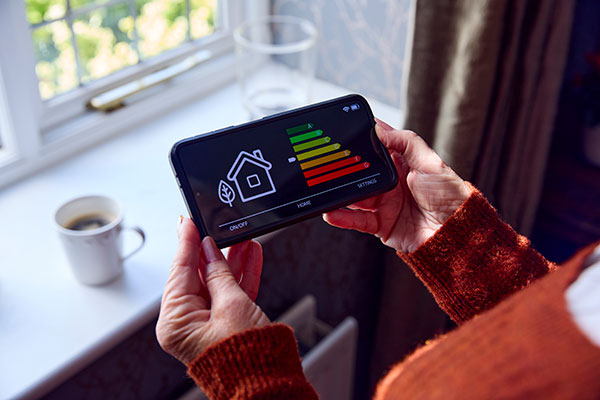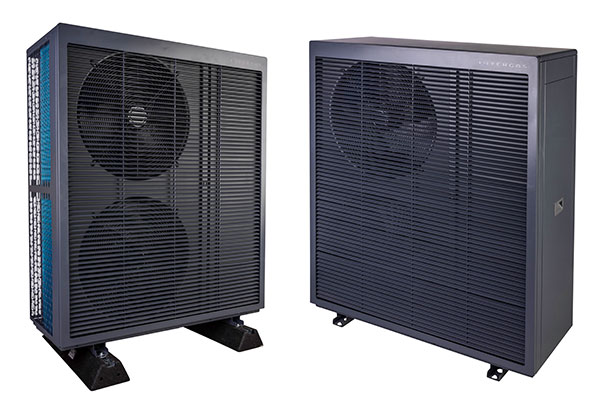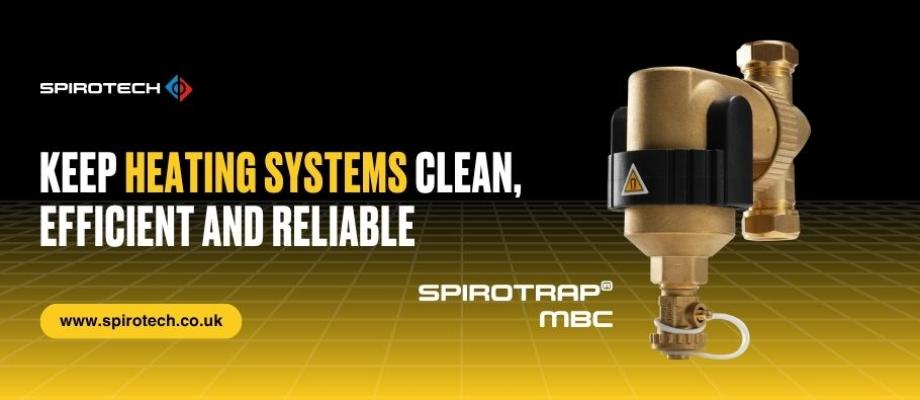by Neil Walker, Technical Sales Support Manager, Intergas
The concept behind heat pumps is simple - powered by electricity, they move heat around to either cool or heat buildings. It’s not a new idea; they were invented in the 1850s and have been used in homes since the 1960s. However all of a sudden, they’ve become the hottest home appliance, shoved into the spotlight by the potential for cost savings and climate benefits, as well as by policy incentives such as the Boiler Upgrade Scheme (BUS).
In the quest for more sustainable and environmentally friendly heating solutions, heat pumps have emerged as a beacon of hope. Air Source Heat Pumps (ASHP’s), are gaining momentum as a viable alternative to traditional fossil fuel heating systems.
The heat pump industry plays a crucial role in reducing carbon emissions by providing efficient and sustainable heating solutions. According to the Committee on Climate Change, buildings account for approximately 20% of the UK’s total greenhouse gas emissions.

Image © iStock
As awareness of the environmental impact of traditional heating methods grows, so does the demand for heat pump installations. Attracting new and training more engineers in the heat pump industry will help meet this growing demand. With a skilled workforce, the industry can keep up with the increasing number of households and businesses looking to adopt heat pump technology. Moreover, it will foster healthy competition, driving innovation and improving the quality of installations and maintenance services.
With new technological advancements enhancing efficiency and performance; by investing in training programs, engineers can stay up to date with the latest developments in heat pump technology. This ensures that installations are carried out correctly, maximising energy efficiency and customer satisfaction. With training, engineers can troubleshoot effectively, maintain, and repair heat pump systems, extending their lifespan and ensuring optimal performance.
If you’ve spent your whole career working with gas boilers, you might think installing heat pumps would be complicated.
But the reality? They’re not!
Before you dive into the world of heat pump design and installation, it’s essential to have a solid understanding of how heat pumps work. Heat pumps extract heat from the air, ground, or water and transfer it to a building to provide heating and DHW.
Simple though the basic idea may be, the details of how heat pumps work are fascinating. In the name of controlling a properties temperature, a heat pump can almost seem to break the laws of physics. Heat pumps are also getting better; new models are more efficient and better able to handle cold weather and deliver heating comfort.
At the heart of a heat pump’s efficiency is its ability to move heat rather than generate it. Unlike traditional water heaters and boilers, which produce heat through combustion, heat pumps use a refrigeration cycle to transfer heat from one location to another. This process is highly efficient, as it requires significantly less energy to move heat than to generate it.
The energy efficiency of a heat pump is typically measured by its Coefficient of Performance (COP) and Seasonal Coefficient of Performance (SCOP). The COP represents the ratio of the heat output to the energy input at a specific moment, with a higher COP indicating greater efficiency. The SCOP is a metric that measures the energy efficiency of a heat pump over an entire heating season. The SCOP takes into account the varying outdoor temperatures and operating conditions throughout the season, giving a more comprehensive picture of the heat pump’s overall performance.
The hero in a heat pump is the refrigerant; a fluid that moves in a sealed circuit, soaking up and releasing heat as it goes. Electricity powers the system, pushing the refrigerant around the cycle. A key factor that influence a heat pump’s energy efficiency and performance is the refrigerant used in the system. Traditionally, heat pumps have relied on synthetic refrigerants, such as R-410A, which have been found to have a significant impact on the environment due to their high global warming potential (GWP) and ozone-depleting properties.

Intergas Heating's Xceed Heat Pumps. Images © Intergas Heating
R290 is a natural refrigerant that has a significantly lower GWP compared to traditional synthetic refrigerants. This makes R290 heat pumps a more sustainable choice for heating and DHW generation, as they can help reduce the environmental impact. Additionally, R290 has excellent thermodynamic properties, which can contribute to improved energy efficiency and performance in heat pump systems. By understanding the energy efficiency advantages of R290 heat pumps, property owners can make more informed decisions about their heating needs.
When it comes to selecting an R290 heat pump, there are several principal factors to consider. These factors can help you make an informed decision that aligns with your energy efficiency and sustainability goals, as well as your clients budget and properties heating and DHW requirements.
1. Energy Efficiency: As previously mentioned, R290 heat pumps are known for their excellent energy efficiency, with higher Coefficient of Performance (COP) and Seasonal Coefficient of Performance (SCOP) ratings compared to traditional systems. When evaluating R290 heat pumps, pay close attention to these metrics to ensure you are choosing a highly efficient model that will translate to lower energy bills and a smaller environmental impact.
2. Heating and DHW Capacity: Ensure that the R290 heat pump you choose is appropriately sized for your clients space heating and DHW demands, considering factors like the square meterage, insulation, and location. Properly sizing the heat pump will ensure optimal performance and prevent over- or under-sizing, which can lead to inefficient operation and higher bills.
3. Safety Considerations: R290 is refrigerant grade propane, as a hydrocarbon refrigerant, R290 is highly flammable. This often leads to questions about its safety. As long as the appropriate safety procedures are put in place, R290 is exceptionally safe to use as a refrigerant. It is essential to choose an R290 heat pump that meets or exceeds all appropriate safety standards and regulations. Look for units that have been certified by recognised safety organisations and ensure that trained professionals will conduct the installation and maintenance of the system.
Risks can be mitigated by positioning heat pumps in clear, open areas in a defined “Safety Zone” as well as preventing leaks using methods like pressure testing, good commissioning and servicing.
Although propane can appear to be dangerous when compared to other refrigerants, it’s worth noting that most buildings have a gas connection. LPG tanks and bottled gas are also common. So, gas risks certainly aren’t a new problem.
4. Noise Levels: Heat pumps can cause some noise during operation, and this is a key factor to consider, especially in residential or areas with noise prohibition standards. You might be surprised to learn that heat pumps are often quieter than the average gas boiler. Most heat pumps are extremely quiet running, with the noise levels rarely causing an issue for homeowners or their neighbours.
The current legal (Permitted Development Rights) noise limit for a heat pump is 42 decibels. This is measured from the nearest habitable room of the closest neighbouring property. The noise generated by a heat pump is quiet and consistent, often described as white noise. This means that the noise blends into the background rather than being disruptive, most people won’t even notice the noise that a heat pump creates.
5. Maintenance and Servicing: Regular maintenance is fundamental for the longevity and optimal performance of any heat pump. Just like a regular boiler, the system owner should try and follow the conditions of their heat pump warranty or guarantee.
6. Warranty and Manufacturer Support: Investigate the warranty coverage and the level of manufacturer support available for the R290 heat pump you are considering. This can provide peace of mind and guarantee that your customer have access to reliable assistance if any issues arise during the lifetime of the system.
7. Cost: While R290 heat pumps may have a higher upfront cost compared to traditional systems, it is important to consider the long-term energy savings and environmental benefits.
In the UK, attitudes towards energy efficiency are shifting as people become more aware of their carbon footprint and rising energy costs. Heat pumps can play a significant role in this transition by offering a more sustainable alternative to traditional heating.
While some homeowners are hesitant due to the upfront costs and concerns about installation, government grants and long-term savings are slowly changing perspectives. The ability to reduce both energy bills and carbon emissions makes heat pumps an attractive option for those looking to future-proof their homes.
Currently the UK government offers the Boiler Upgrade Scheme (BUS) grants and other incentives to encourage homeowners to switch to heat pumps. A grant of £7,500 for eligible applicants can cut the cost of a heat pump and its installation significantly.
- Log in to post comments













